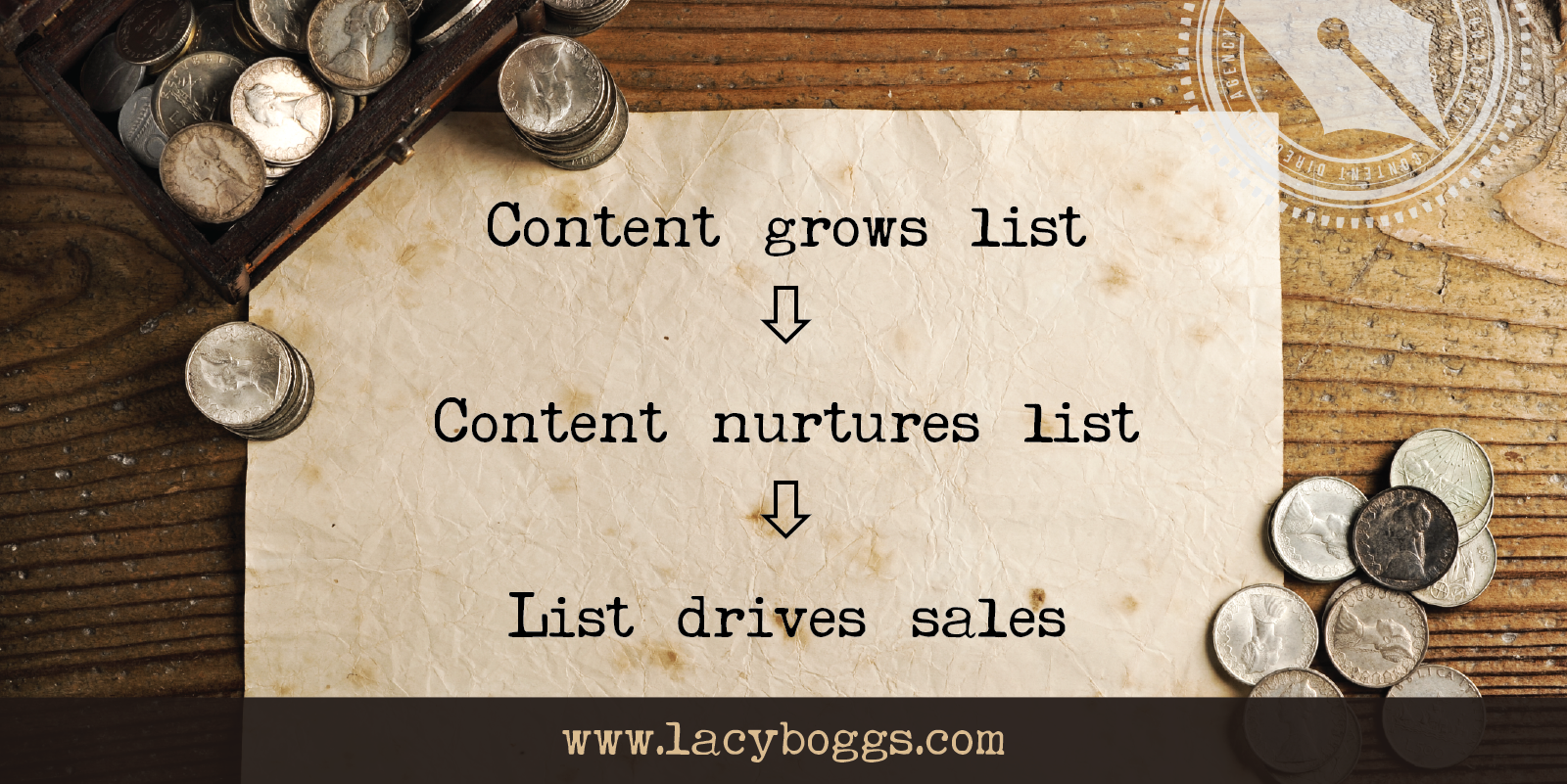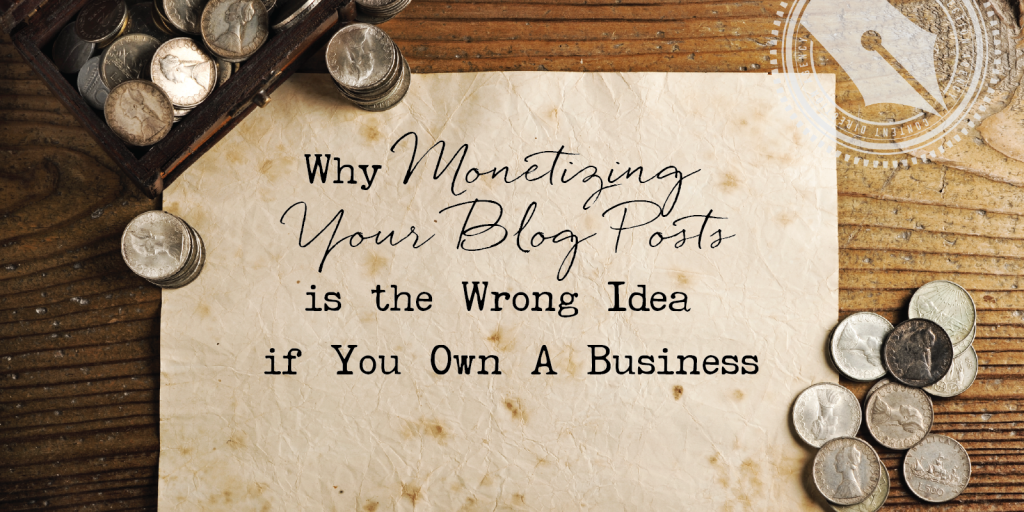A student in the private Facebook community for Content Intelligence Academy recently asked about monetizing her blog posts, and shared a link to one she had done as an example. And so I asked her how well it was converting for her — not to be rude, just to gather data to answer her question.
Turns out, when she ran the numbers, it hadn’t converted at all — not a single sale.
Now, I’m not picking on her at all — and she’s not alone. This is a common misconception I see among bloggers of all experience levels. They think that they can put a link to a product (or a sales page) in a blog post and have it drive sales.
And when it doesn’t do very well, they naturally assume that blogging doesn’t work to drive sales.
And they’re right: Blogging that way doesn’t drive sales.
But, blogging the right way — with a strategy in place — can have a huge impact on your sales.
Consider the sales process
I’ve been learning a lot from my friend and client, Mindy Crary lately. She opened my eyes to the fact that all sales is a process — and I realized that content marketing is a big part of this process for me (and probably for you, since you’re reading this).
Her basic sales process includes these steps:
- Leads: How many leads do you have to contact?
- Talk Tos: Of those leads, how many did you actually reach?
- Schedule: Of those you spoke to, how many did you schedule for a meeting?
- Meet: How many meetings did you hold this week?
- Sales: How many meetings converted to clients?
You can read all about her genius strategy for improving your sales without improving your close rate here, but what it breaks down to is that if you can improve your numbers at any stage of the game, you can make more sales. Capisce?
But what does this have to do with content?
Well, I use content to improve my numbers at a couple of these stages. For example, the fastest way to get more sales is to get more leads, and in a content marketing world, a lead is an email opt-in. So my process looks something like this:
- Leads = Email opt-ins
- Talk Tos = Email open rate
- Schedule = Scheduling a phone call for 1:1 services
- Meet = Email click-thru rate to my sales page
- Sales = Conversion rate
And I use content at every stage of the process.
(Note that, depending on the product, I probably use “schedule” OR “meet” but not both. Or, in some cases, they are reversed, with the call to action on the sales page being to schedule a call rather than buy a product.)
Why thinking about blog “monetization” is wrong
In this content marketing world, copy is king. We must use exciting, compelling copy to get people to open our emails, schedule a discovery call or click through to a sales page, and eventually get them to make a purchase.
But what about that first one?
Growing your list can be about good copy — figuring out what the most compelling call to action on an opt-in form might be, for example — but it’s also about story telling. Content to build your list is the long game, and that’s what I like to teach.

If you’re interested in this theory, you can sign up to be the first to know when the new Content Intelligence Academy is accepting enrollment and get first dibs on a seat, but you’ll notice here that I’m saying your email list is where you make the sales, not a blog post.
That’s why the idea of “monetizing” a blog post is wrong — at least for those of us blogging to support a business.
Now, there are some business models for blogging in which the bloggers put affiliate links everywhere and make a very good living doing so. For that business model to work, you focus on building your traffic, not necessarily your list. It’s a numbers game, and it requires very large numbers of people to work.
This is why my student wasn’t seeing a good conversion rate when she tried just putting links to products in a blog post; she didn’t have enough traffic to make that strategy pay off. So she has two options: drive more traffic to her site in order to see the sales she wants, or switch tactics.
For most of the people reading this post, you have a different business model. You want to concentrate on getting people to sign up for your email list, where they are much easier to sell to. Personally, I think it’s easier all around: It’s easier to convert a higher number of people to opt-in to an email list (rather than a sale) so you need less traffic overall, and then it’s easier to convert those people to a sale once you can communicate with them via email.
These different business models require different types of content, too — and a different sales process.
When you’re blogging to support a business, you’re not just “blogging,” you’re content marketing, and content marketing is a long game.
Unless you have huge amounts of traffic, you cannot simply put a link to a product into a blog post and expect to make a ton of sales — believe me, I’ve tried it!
What you can do, however, is use your content to build a path to the sale, and then lead your readers down that path until they become customers.

